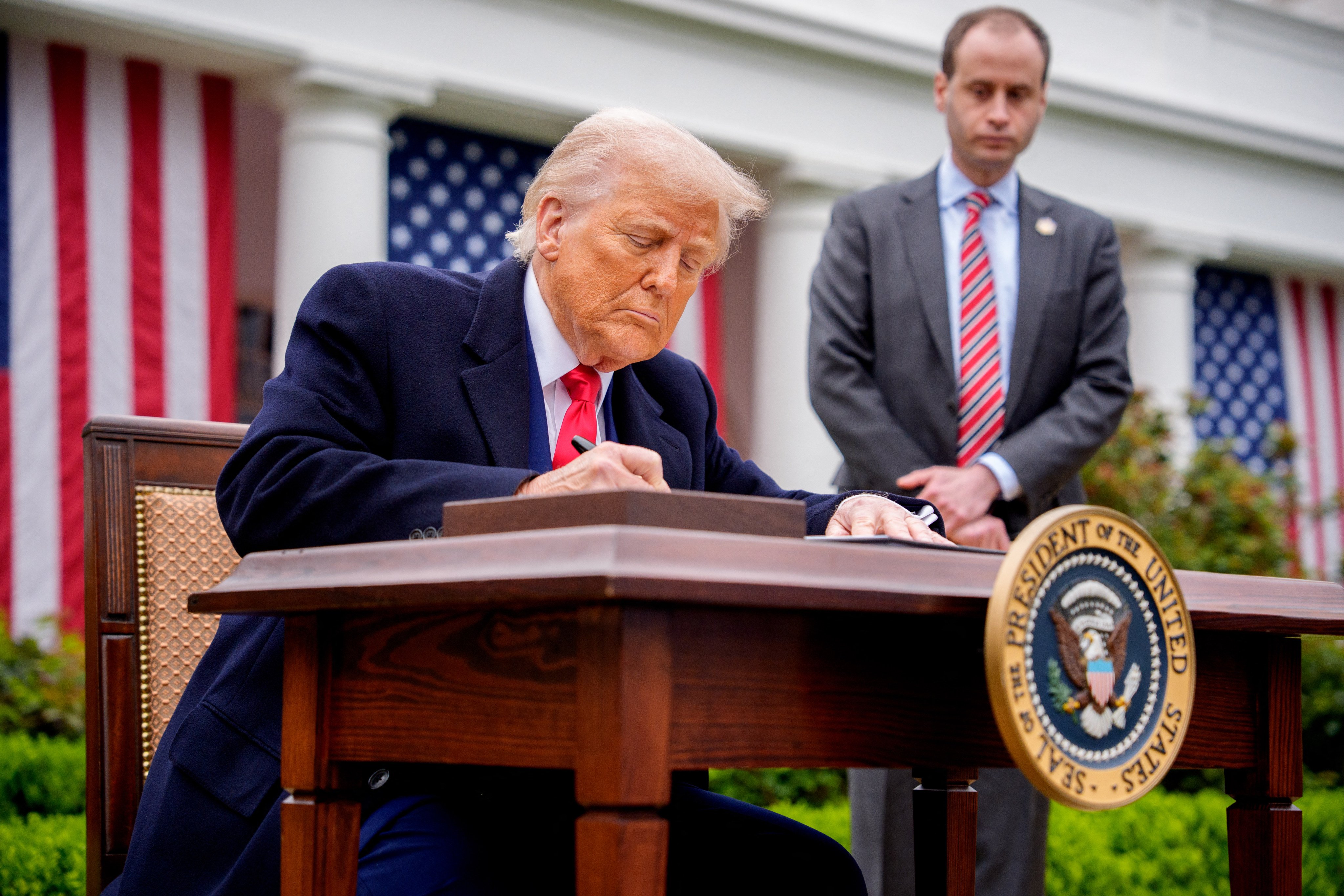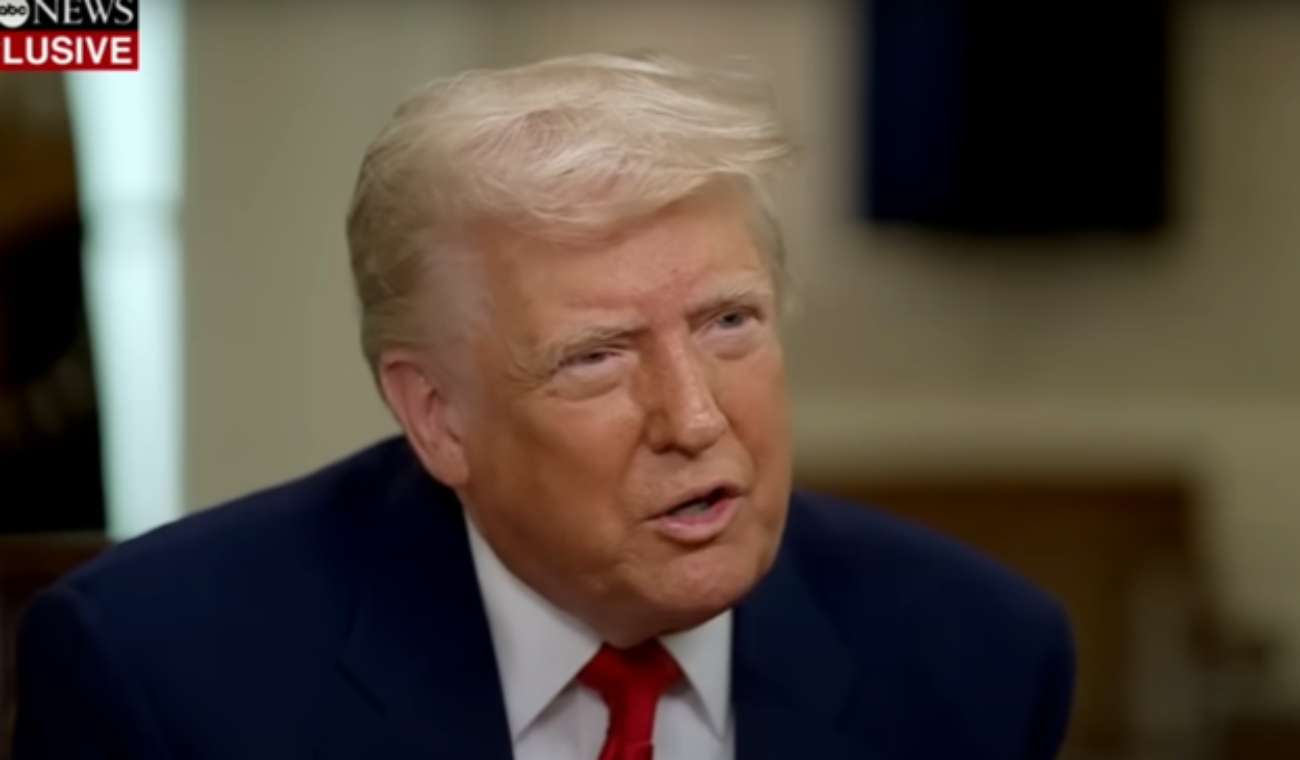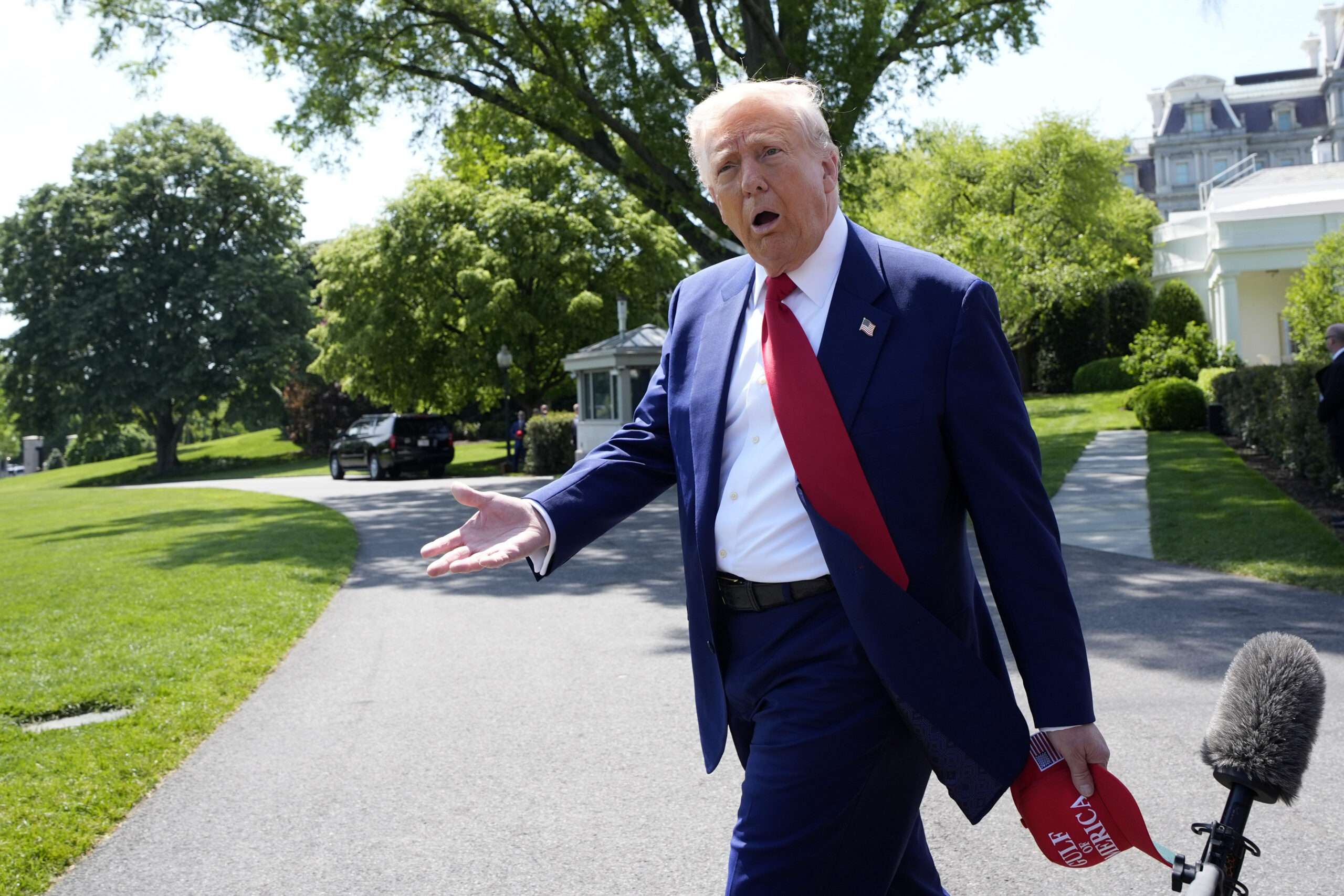A month after ‘Liberation Day,’ how has the world responded to Trump’s trade war?

One month after US President Donald Trump’s “Liberation Day” tariffs shocked the world, the main trading partners of the world’s biggest economy remain divided over how to respond to the unprecedented measures. Below is an overview of the various reactions from US trade partners to Washington’s “reciprocal tariffs”, along with the different tariff levels and evolving trade relationships between the US and other countries. We categorise countries into different camps, based on a benchmark published in a China Securities (International) Finance Holding research note. “Fight to the end”: China strikes back Stance: China will resolutely defend its rights and firmly uphold the multilateral trading system and international economic order, said a spokesperson from the Ministry of Commerce on April 11. Tariff level: Washington has imposed tariffs totalling 145 per cent on Chinese imports so far this year, bringing the effective tariff rate to about 156 per cent. A fact sheet released by the White House on April 15 showed that China now faces tariffs of up to 245 per cent, including duties ranging from 7.5 per cent to 100 per cent that predate the second Trump administration. Meanwhile, Beijing’s new levies on US goods have risen to 125 per cent, also on top of earlier-imposed tariffs. Trade level: US total goods trade with China was estimated at US$688.3 billion in 2024, up from US$664.5 billion in 2023, according to China Customs. US goods exports to China in 2024 totalled US$163.6 billion, down 0.37 per cent from 2023. US goods imports from China in 2024 totalled US$524.7 billion, up 4.9 per cent from 2023. Countermeasures: China raised additional import tariffs on American goods to 125 per cent, after the US upped the rate to 145 per cent. But Beijing will “simply ignore” any further tariff escalations from the US in the future”, according to a statement from the Customs Tariff Commission of the State Council, the body in charge of administering tariffs and other trade measures. On April 28, China rejected US President Trump’s claims that he received a phone call from Chinese leader Xi Jinping. Meanwhile, Beijing is reported to have waived 125 per cent duties on semiconductor imports, according to a report by Chinese business magazine Caijing. US pharmaceuticals, aircraft engines and other goods have also been added to an exemption list, according to Reuters. China has also called for international unity to defend the multilateral trading system. Foreign Minister Wang Yi has made overtures to European countries to join hands with Beijing against Trump’s tariffs. China has removed sanctions on European Parliament members and President Xi Jinping has visited Vietnam, Cambodia and Malaysia to strengthen regional ties. A stark warning from Europe Stance: The EU is ready for “trade bazooka measures” if negotiations fail by the end of the 90-day window, according to European Commission President Ursula von der Leyen. Meanwhile, Italian Prime Minister Giorgia Meloni met US President Donald Trump on April 17 and tried to convince him of a “zero-for-zero” tariff deal with the EU. Tariff level: Washington applied a reciprocal tariff rate of 20 per cent on all EU imports and a 25 per cent tariff on all car imports – a move likely to affect Germany, the bloc’s biggest economy and exporter. Trade level: US total goods trade with the EU was estimated at US$975.9 billion in 2024, up from US$943 billion in 2023, according to the Office of United States Trade Representative (USTR). US goods exports to the European Union in 2024 were $370.2 billion, up 0.7 per cent from 2023. US goods imports from the EU totalled US$605.8 billion in 2024, up 5.1 per cent from 2023. Countermeasures: The European Commission has issued EU member states with a list of possible concessions for the Trump administration. It has also drawn up a list of goods that it could impose duties on if negotiations fail. A new tool called the anti-coercion instrument could be used for the first time against the US, targeting a wide range of industries such as financial, digital and other services, as well as access to the European market. Canada targets US auto sector Stance: During his successful election campaign, Prime Minister Mark Carney vowed to resist Trump’s duties. He declared the country’s position in an official statement on April 3 when he said, “We will fight these tariffs, protect our workers and build the strongest economy in the G7.” Tariff level: Canada was exempted from the White House’s reciprocal tariffs announced on April 2. But the US had already imposed a 25 per cent tariff on goods not covered under the free trade Canada-United States-Mexico Agreement (CUSMA). A 10 per cent duty was slapped on Canadian energy and potash exports that are not CUSMA-compliant. If existing fentanyl and migration issues can be resolved, CUSMA-compliant goods would continue to receive preferential treatment, according to a White House fact sheet, while non-CUSMA-compliant goods would be subject to a 12 per cent reciprocal tariff. Trade level: US total goods trade with Canada was estimated at US$762.1 billion in 2024, down from US$772 billion in 2023, according to the Office of United States Trade Representative (USTR). US goods exports to Canada in 2024 totalled US$349.4 billion, down 1.4 per cent from 2023. US goods imports from Canada in 2024 totalled US$412.7 billion, down 1.4 per cent from 2023. Countermeasures: Canada has introduced 25 per cent tariffs on non-CUSMA-compliant fully assembled vehicles imported from the US and 25 per cent tariffs on non-Canadian and non-Mexican components in CUSMA-compliant fully assembled vehicles imported from the US. Finding a solution through dialogue? Stance: Economic Revitalization Minister Ryosei Akazawa said on April 18 that a “quick deal” was unlikely and that any agreements would probably take time. Tariff level: A reciprocal tariff of 24 per cent hit Japanese goods exports to America, and a 25 per cent tariff on all automobiles made outside the US. Trade level: US goods trade with Japan was estimated at US$227.9 billion in 2024, down from 222.9 billion in 2023, according to the Office of United States Trade Representative (USTR). US goods exports to Japan in 2024 totalled US$79.7 billion, up 5.4 per cent from 2023. US goods imports from Japan totalled US$148.2 billion in 2024, up 0.7 per cent from 2023. Countermeasures: Both countries began trade talks on April 17, making Japan one of the first nations to open direct tariff negotiations with the Trump administration. Japanese Finance Minister Katsunobu Kato said earlier that Tokyo would not use its US Treasury Holdings as a bargaining tool. Japan is the largest US Treasury holder in the world. Stance: President Claudia Sheinbaum argued that steel, aluminium and automobiles should be exempt from tariffs under Mexico’s free trade agreement with the US. No deal has been reached with Trump about lifting the tariffs. Tariff level: Exempted from reciprocal tariffs. But Mexico faces a 25 per cent fentanyl-related tariff, 25 per cent tariffs on vehicles and auto parts, and 25 per cent duties on steel imports. If the existing fentanyl and migration issues can be resolved, US-Mexico-Canada compliant goods would continue to receive preferential treatment, according to a White House fact sheet. In contrast, non-USMCA compliant goods would be subject to a 12 per cent reciprocal tariff. Trade level: US total goods trade with Mexico was estimated at US$839.9 billion in 2024, up from US$797.9 billion in 2023, according to the Office of United States Trade Representative (USTR). US goods exports to Mexico in 2024 totalled US$334 billion, up 3.5 per cent from 2023. US goods imports from Mexico in 2024 totalled US$505.9 billion, up 6.4 per cent from 2023. Countermeasures: In April, Sheinbaum met Brazilian President Luiz Inácio Lula da Silva, a sign that both countries could work together to strengthen trade as a counterweight to Washington’s global tariffs. South Korea Stance: Acting President Han Duck-soo said his country “will not fight back against” US tariffs. Tariff level: 25 per cent reciprocal tariffs on South Korean goods imported by the US. Trade level: US goods trade with Korea was estimated at US$197.1 billion in 2024, up from US$181.4 billion in 2023, according to the Office of United States Trade Representative (USTR). US goods exports to Korea in 2024 were US$65.5 billion, up 0.7 per cent from 2023. US goods imports from Korea totalled US$131.5 billion in 2024, up 13.3 per cent from 2023. Countermeasures: In talks to reduce the trade surplus and for Seoul to buy liquefied natural gas and commercial airliners from the US. The authorities have also launched investigations to crack down on illegal Korean exports in an effort to assuage US concerns over the transshipment of goods from China. In addition, Seoul has offered to cooperate with Washington on shipbuilding and energy, but officials have ruled out a trade deal until after South Korea’s snap presidential election on June 3. Stance: Preferred trade talks without launching retaliatory tariffs. US Vice-President J.D. Vance has visited India as both nations look to cement a bilateral trade deal. Tariff level: 26 per cent reciprocal tariff on Indian imports to the US. Trade level: US total goods trade with India was estimated at US$129.2 billion in 2024, up from US$124 billion in 2023, according to the Office of United States Trade Representative (USTR). US goods exports to India in 2024 were US$41.8 billion, up 3.4 per cent from 2023. US goods imports from India totalled US$87.4 billion in 2024, up 4.5 per cent from 2023. Countermeasures: India has reportedly made a series of concessions, from cutting tariffs to increasing energy purchases. Delhi is reportedly willing to offer Washington a most-favoured nation clause, meaning no other trade partner would have superior trade terms than the US. In contrast, the country rolled out a 12 per cent temporary tariff on some steel products on April 21 – mainly aimed at curbing a surge in cheap imports from China. United Kingdom Stance: The UK government did not opt for retaliation and has pursued ongoing bilateral talks. Tariff level: The base level is a 10 per cent reciprocal tariff, plus 25 per cent tariffs on all car imports to America from the UK. Trade level: US total goods trade with the UK was estimated at US$148 billion in 2024, up from US$138.5 billion in 2023, according to the Office of United States Trade Representative (USTR). US goods exports to the UK in 2024 totalled US$79.9 billion, up 7.6 per cent from 2023. US goods imports from the United Kingdom totalled US$68.1 billion in 2024, up 6 per cent from 2023. Countermeasures: US Vice-President J.D. Vance said there was a “good chance” a trade deal could be reached between the US and UK. Stance: Proactive negotiations with the US to reduce duties, but talks have been postponed after Washington asked Thai authorities to review important issues including “tariffs that may be adjusted appropriately”, Prime Minister Paetongtarn Shinawatra said. Tariff level: A 36 per cent reciprocal tariff, plus additional tariffs up to 375.19 per cent on imports of solar panels. Trade level: US goods trade with Thailand was estimated at US$81 billion in 2024, up from US$71.8 billion in 2023, according to the Office of United States Trade Representative (USTR). US goods exports to Thailand in 2024 totalled US$17.7 billion, up 14.7 per cent from 2023. US goods imports from Thailand totalled US$63.3 billion in 2024, up 12.5 per cent from 2023. Countermeasures: The country aims to encourage Thai investment in the US, monitor Chinese imports and accelerate free trade agreement negotiations with the EU. Stance: In April, Deputy Prime Minister Ho Duc Phoc met US Secretary of the Treasury Scott Bessent, as both sides agreed to begin formal discussions. Tariff level: A 46 per cent reciprocal tariff rate, plus tariffs up to 395.9 per cent on imports of solar panels. Trade level: The US goods trade with Vietnam was estimated at US$149.6 billion in 2024, up from US$124.2 billion in 2023, according to the Office of United States Trade Representative (USTR). US goods exports to Vietnam in 2024 totalled US$13.1 billion, up 32.9 per cent from 2023. US goods imports from Vietnam totalled US$136.6 billion in 2024, up 19.3 per cent from 2023. Countermeasures: Vietnam proposed cutting tariffs on US products such as liquefied natural gas and cars as well as approving Starlink services. South Korea and Vietnam agreed to closely cooperate in the face of Trump’s tariffs. The country’s trade ministry has also begun cracking down on the illegal transshipment of goods.


















